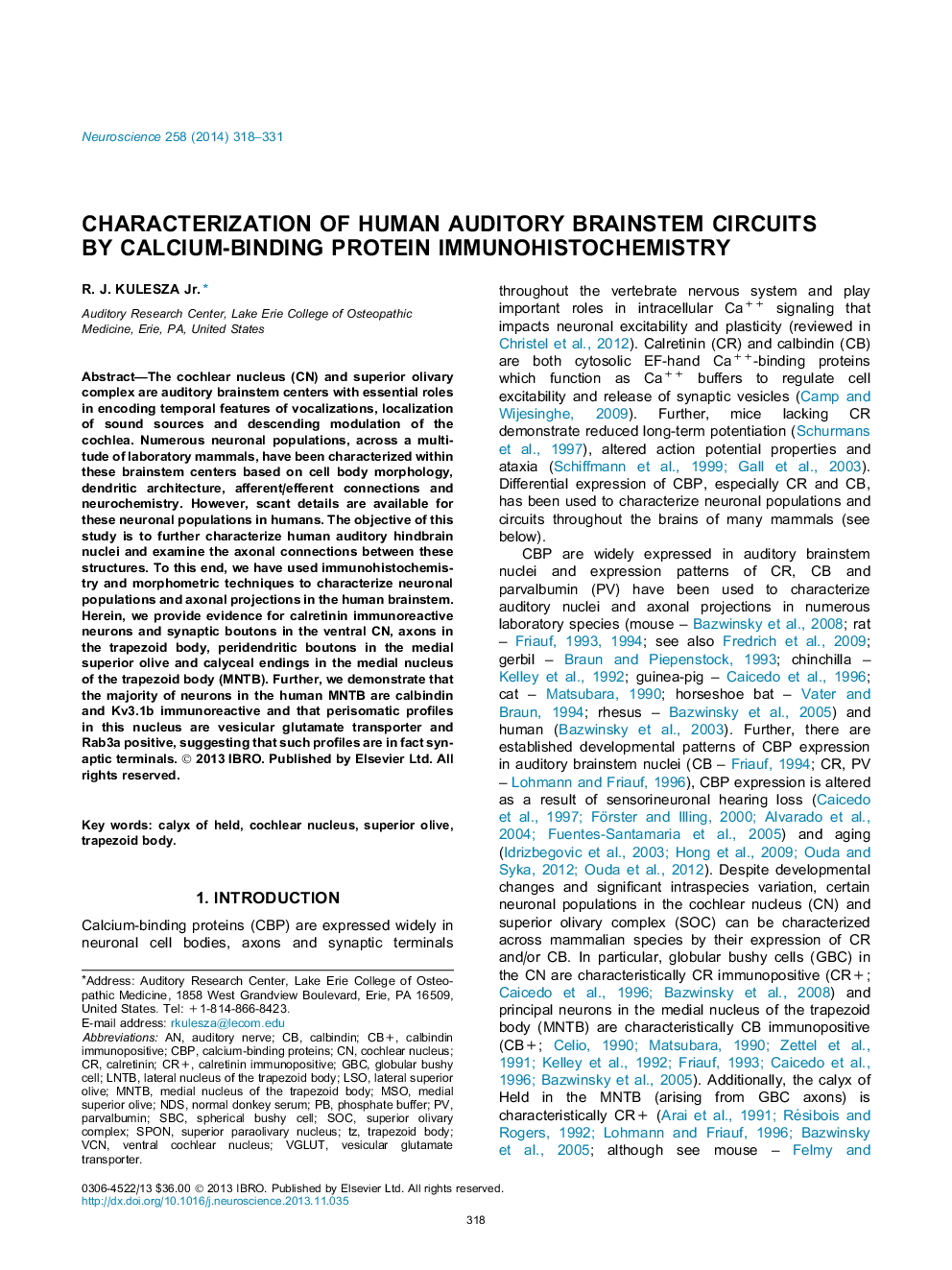| Article ID | Journal | Published Year | Pages | File Type |
|---|---|---|---|---|
| 4337794 | Neuroscience | 2014 | 14 Pages |
Abstract
The cochlear nucleus (CN) and superior olivary complex are auditory brainstem centers with essential roles in encoding temporal features of vocalizations, localization of sound sources and descending modulation of the cochlea. Numerous neuronal populations, across a multitude of laboratory mammals, have been characterized within these brainstem centers based on cell body morphology, dendritic architecture, afferent/efferent connections and neurochemistry. However, scant details are available for these neuronal populations in humans. The objective of this study is to further characterize human auditory hindbrain nuclei and examine the axonal connections between these structures. To this end, we have used immunohistochemistry and morphometric techniques to characterize neuronal populations and axonal projections in the human brainstem. Herein, we provide evidence for calretinin immunoreactive neurons and synaptic boutons in the ventral CN, axons in the trapezoid body, peridendritic boutons in the medial superior olive and calyceal endings in the medial nucleus of the trapezoid body (MNTB). Further, we demonstrate that the majority of neurons in the human MNTB are calbindin and Kv3.1b immunoreactive and that perisomatic profiles in this nucleus are vesicular glutamate transporter and Rab3a positive, suggesting that such profiles are in fact synaptic terminals.
Related Topics
Life Sciences
Neuroscience
Neuroscience (General)
Authors
R.J. Jr.,
